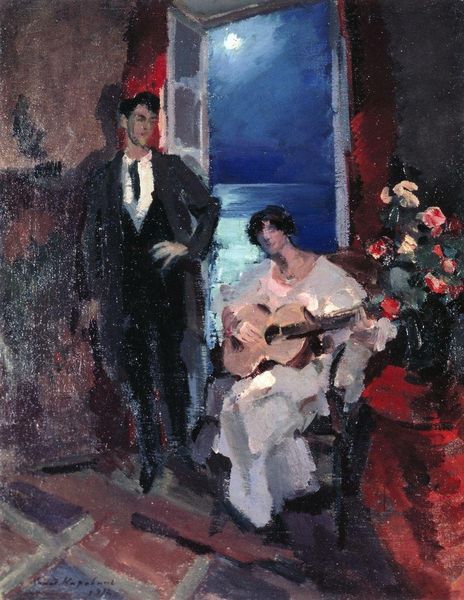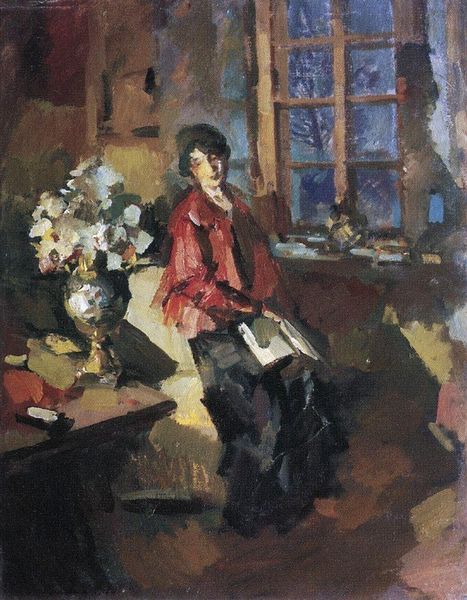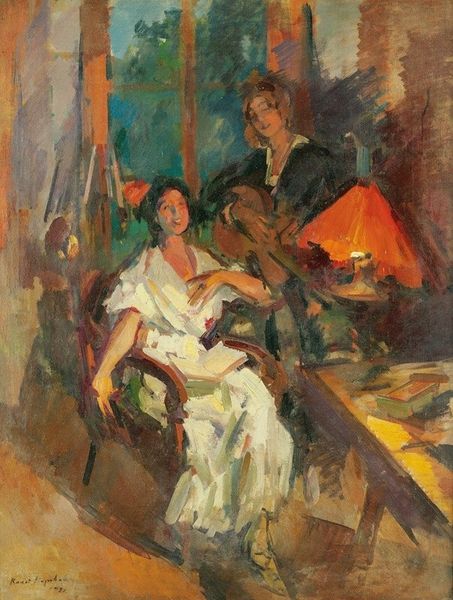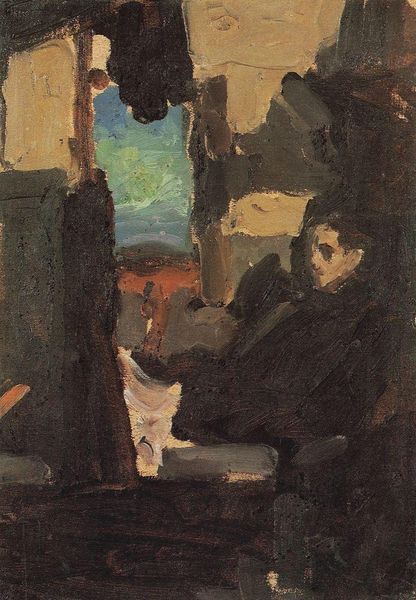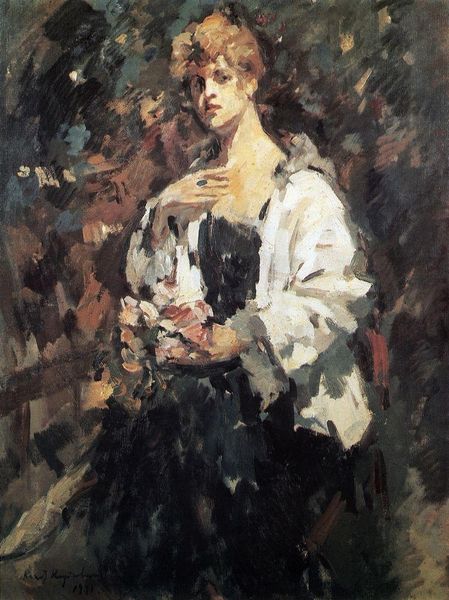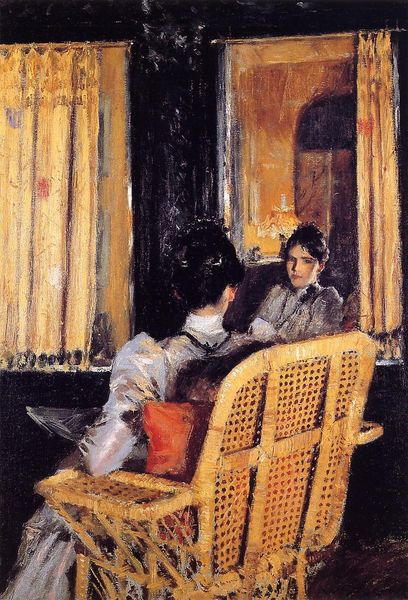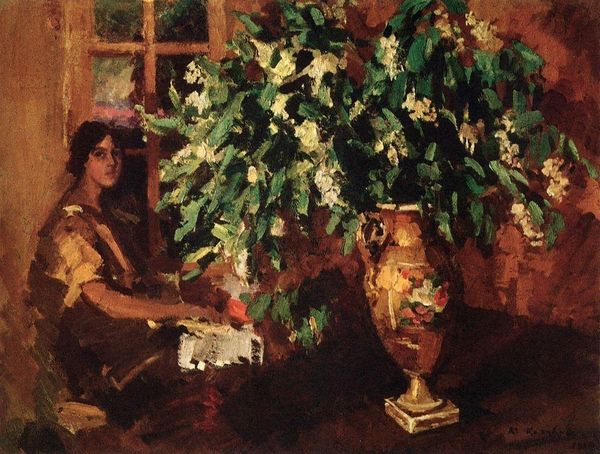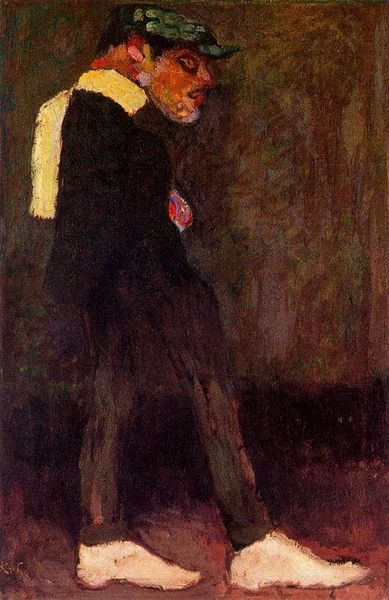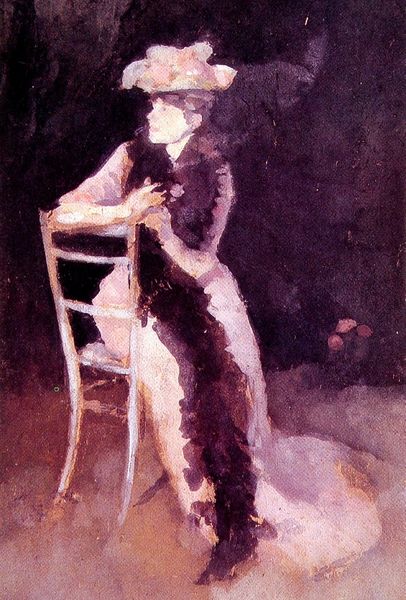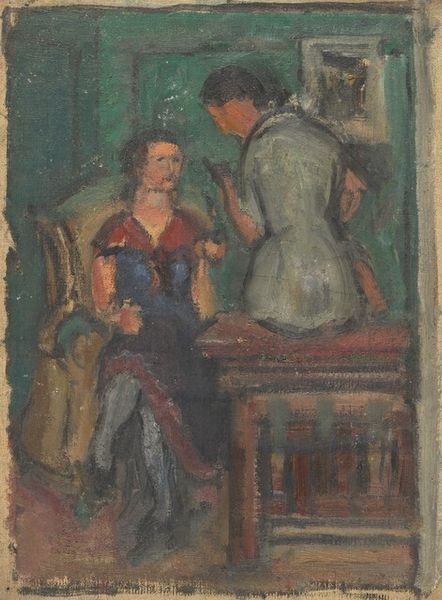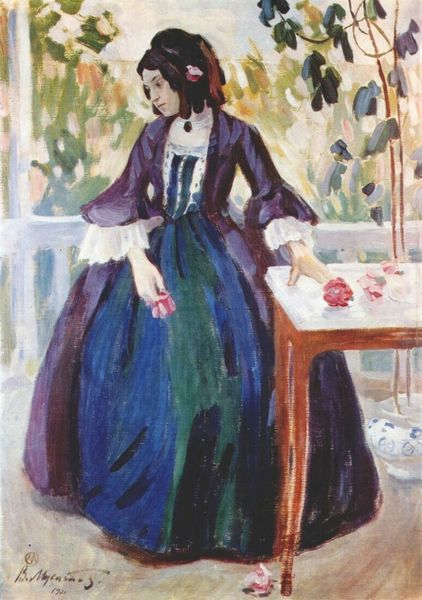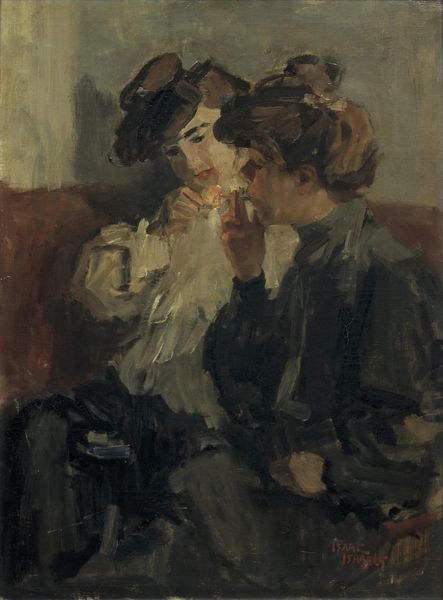
Copyright: Public domain
Editor: Here we have Korovin's "On the Terrace," an oil painting from 1920. It feels a bit melancholic, with those deep shadows. What symbolic weight do you think the terrace setting carries here? Curator: The terrace, often a liminal space between inside and outside, takes on multiple symbolic layers. In this work, and broadly across visual culture, terraces invite contemplation of what’s publicly performed versus what’s privately felt. It raises questions of cultural memory and continuity. Does the terrace connect with an actual place in the artist's memory? Consider, also, the era: 1920. Post-war. Is this a remembrance of pre-war opulence? Editor: So the flowers and the fashionable women could be read as symbols of a lost, luxurious past? Curator: Precisely. Red, particularly the color of those roses, often speaks to passion, love, but also sacrifice, blood. The artist uses color to construct this scene of reflection and perhaps mourning. Look closely at the expressions - do they seem present and engaged, or lost in thought? Editor: Lost in thought, definitely. There's almost a sense of detachment, even alienation. They aren't connecting with each other. Curator: And what about the clothing? How do the stylistic choices relate to broader cultural trends of the era and the collective psychology around loss? Editor: Their garments do feel like echoes of earlier styles. Perhaps representing an unwillingness to fully embrace modernity. It’s like they are literally wearing the past. Curator: The painting uses symbolic images to build a representation of longing and how social trauma affects collective cultural expression. Now that we've taken a closer look, does this resonate differently with you? Editor: Absolutely. I see the work is a portrait of a cultural sentiment through symbolic choices and representation of color. Thanks for unveiling these symbolic components!
Comments
No comments
Be the first to comment and join the conversation on the ultimate creative platform.
